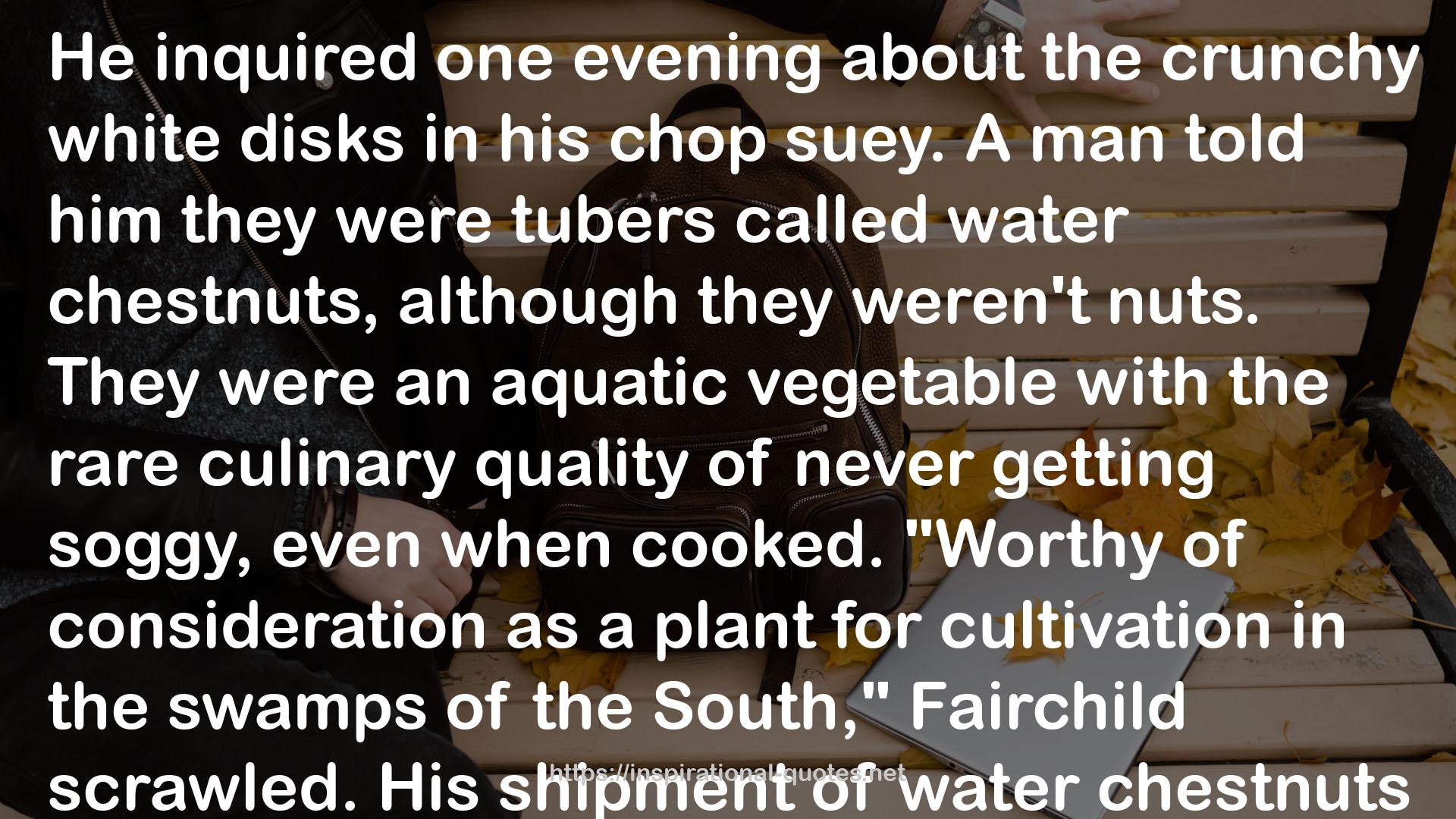" He inquired one evening about the crunchy white disks in his chop suey. A man told him they were tubers called water chestnuts, although they weren't nuts. They were an aquatic vegetable with the rare culinary quality of never getting soggy, even when cooked. "Worthy of consideration as a plant for cultivation in the swamps of the South," Fairchild scrawled.
His shipment of water chestnuts indeed made it to the South. But they never caught on. They had to be grown in muddy swamps, which wasn't a fatal flaw, but it was inconvenient and dirty, all for a small food with little flavor. If the United States had had more land or been at a point in its history when it valued more efficient use of land, farmers might have begun producing water chestnuts just because. But as with many of Fairchild's crops, the timing just wasn't right, and thus, water chestnuts remained an Asian food. The best evidence of this may be that in America ten decades later, water chestnuts tend to play little more than a humdrum role as supporting actors in Chinese takeout. "
Image for Quotes
 Worthy of consideration as a plant for cultivation in the swamps of the South," Fairchild scrawled.
Worthy of consideration as a plant for cultivation in the swamps of the South," Fairchild scrawled.His shipment of water chestnuts indeed made it to the South. But they never caught on. They had to be grown in muddy swamps, which wasn't a fatal flaw, but it was inconvenient and dirty, all for a small food with little flavor. If the United States had had more land or been at a point in its history when it valued more efficient use of land, farmers might have begun producing water chestnuts just because. But as with many of Fairchild's crops, the timing just wasn't right, and thus, water chestnuts remained an Asian food. The best evidence of this may be that in America ten decades later, water chestnuts tend to play little more than a humdrum role as supporting actors in Chinese takeout." style="width:100%;margin:20px 0;"/>